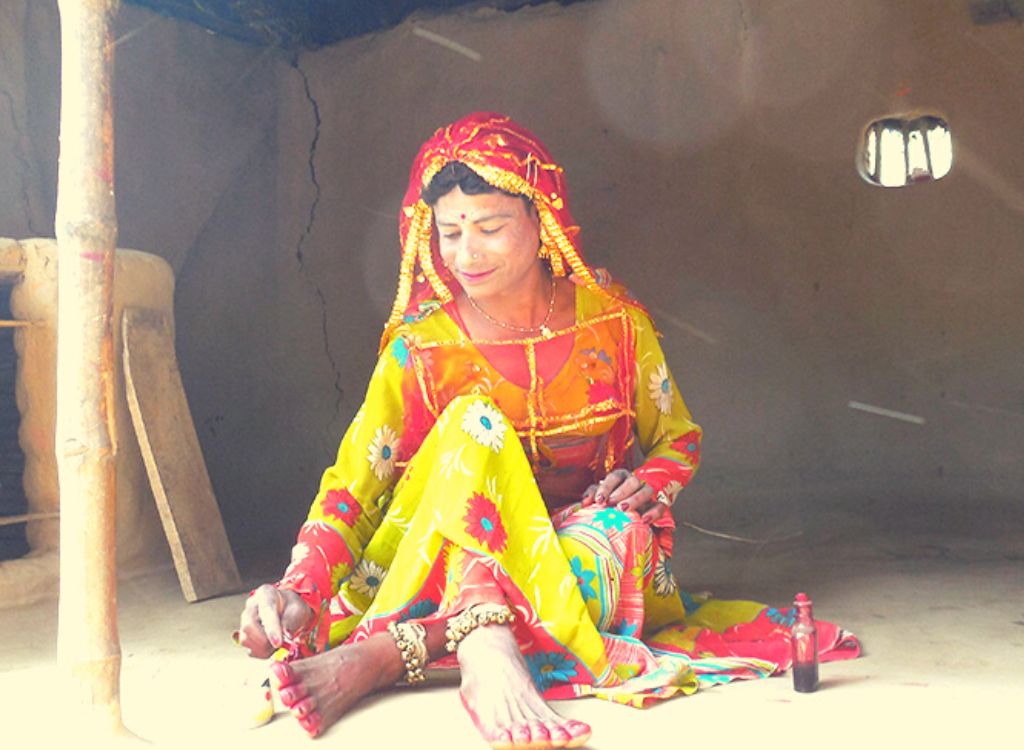
The tale and telling of queerness in Bengal’s Bhadu songs
When queerness was criminalised in the 19th century, queer-trans people took refuge in the Bhadu folklore that saw them as goddess-incarnates and also gave them visibility.

When queerness was criminalised in the 19th century, queer-trans people took refuge in the Bhadu folklore that saw them as goddess-incarnates and also gave them visibility.
After two years of COVID restrictions, there is a flurry of face-to-face parades and parties for this year’s Pride Month. Admittedly most of these LGTBQ celebrations are happening mostly in metropolitan cities like Mumbai, Pune, Delhi and Kolkata.
The recent proliferation of online queer spaces and pride campaigns advanced the visibility of queer-trans people in public spheres. But many of these online spaces too cater only to metropolitan audiences.
I felt terrible anguish and betrayal, that all this organising about our rights never reached us—it is only limited to these metropolitan cities.
This creates a monopoly of narrative that is devoid of the recognition of queer worldmaking – the creation of “worlds” where non-metropolitan queer-trans-kothi-hijra people may flourish.
Whereas traditional arts like the Bhadu folklore has always been an intrinsic part of this queer worldmaking. It has helped queer-trans people challenge the implied conservatism in rural areas.
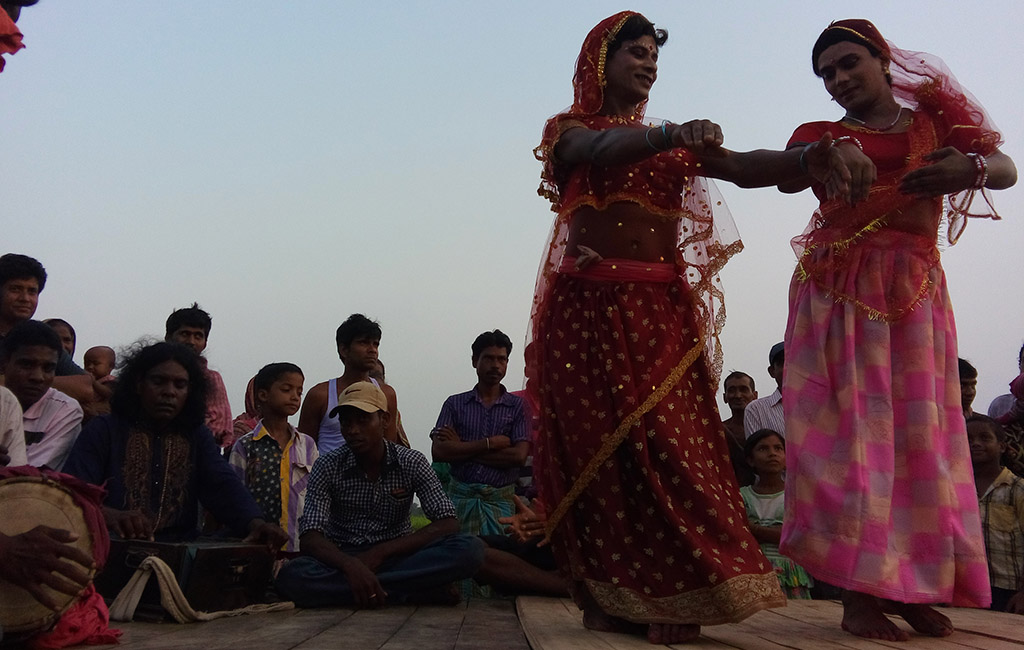
In Bhadu folklore queerness is camouflaged with traditional beliefs, while also fostering a visibility of gender-sexuality marginalised people.
Bhadu is a festival to celebrate the Aus paddy harvesting in Bhadra, the fifth month in the Bengali calendar. It is largely celebrated in south Bengal’s Burdwan, Bankura, Purulia and Birbhum districts.
There are many myths about the origin of the Bhadu festival. But the popular one is about Princess Bhadreswari aka Bhadu, who is said to be the living embodiment of the Goddess Lakshmi.
The story goes that Nilmoni, the king of Kashipur (in the Purulia district), adopted and raised Bhadreswari, who was an orphan. Bhadu fell in love with Anjan, the son of a physician in a neighbouring village. The king did not approve and imprisoned Anjan in an undisclosed location.
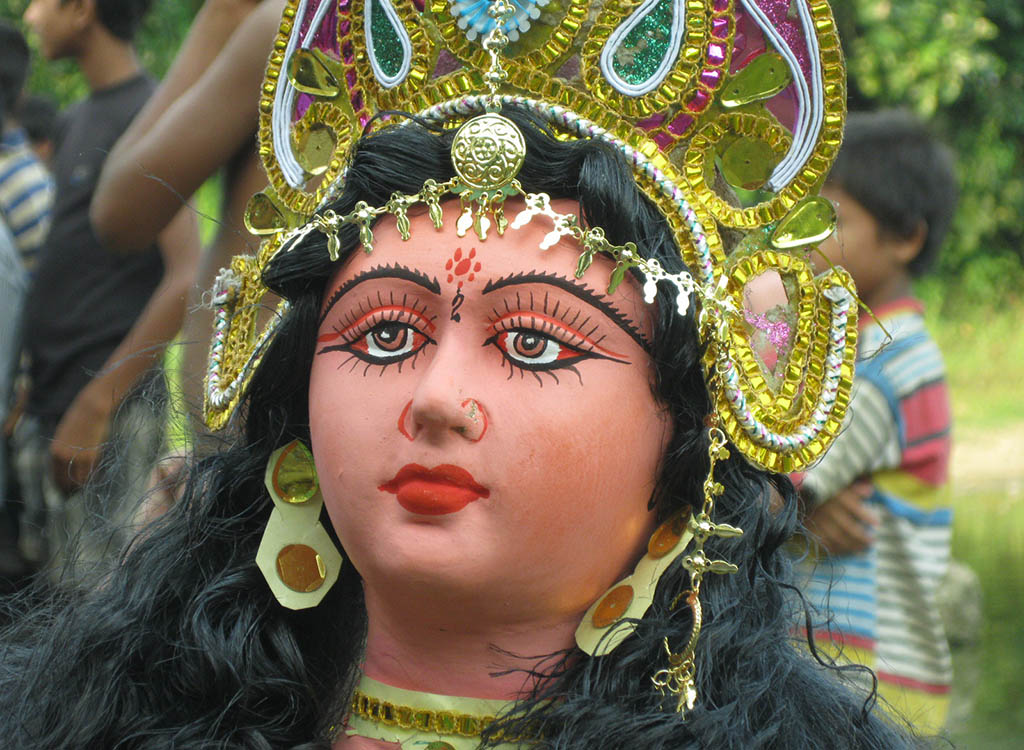
Bhadu travelled through the kingdom with two companions and sang of love near prisons, hoping Anjan would hear her voice. This phase is said to be Bhadu’s Radha Bhav.
Though the king relented and agreed to the marriage, Anjan was killed by dacoits. The grief-stricken Bhadu is believed to have just faded away.
To honour Bhadu’s songs and her extraordinary life, the king built a big idol of Bhadu and started worshiping her.
Around the same time, in 1860, Section 377 of the Indian Penal Code was introduced during the British rule of India. Modelled on the Buggery Act of 1533, it made sexual activities “against the order of nature” illegal and criminalised trans people.
The Radha community in Nadia, West Bengal, came immediately under the radar of this Victorian law. Because many in the Radha community identified as assigned-male-at-birth (AMAB) people living in ‘Radha Bhav’ and practicing homosexuality.
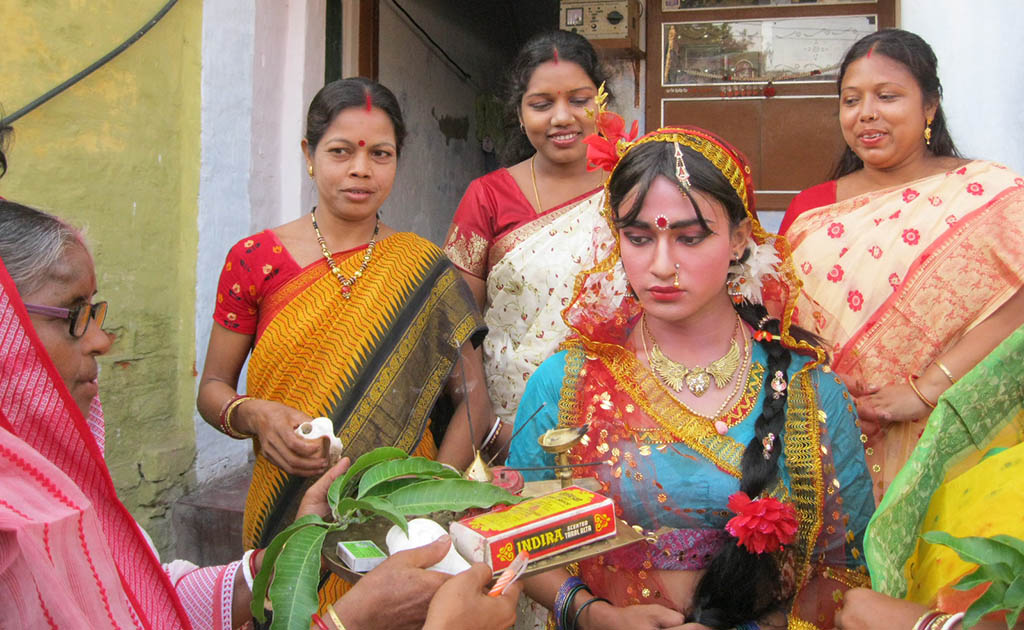
Many kothi-transfeminine people (a spectrum of feminine-identified people usually assigned male at birth) found safety in joining Bhadu groups that moved from village to village to perform and sing.
The villagers would look at them as the devotees of Bhadu and would offer them rice, oil and vegetables. It was perhaps one of those few opportunities for the kothi-trans-fem-queer AMAB people to enact ‘female’ roles that were socially sanctioned and not yet perceived as deviant by the law.
Filmmaker and activist Debgopal Mondol grew up in Birbhum listening to Bhadu songs and seeing the amusing performances of the Bhadu dancers. Their exceptional movie Nisiddho Brotokotha unravels the interconnectedness of Bhadu folklore and queerness in rural Birbhum.
“When I shifted to Kolkata for work, I came to know there’s ‘movement’ about us. There’s a mouthful of vocabulary to refer to our identities and realities. There’s a law that governs us and our sexuality. There’s a parade, there are pride celebrations and there are queer parties,” said Mondol.
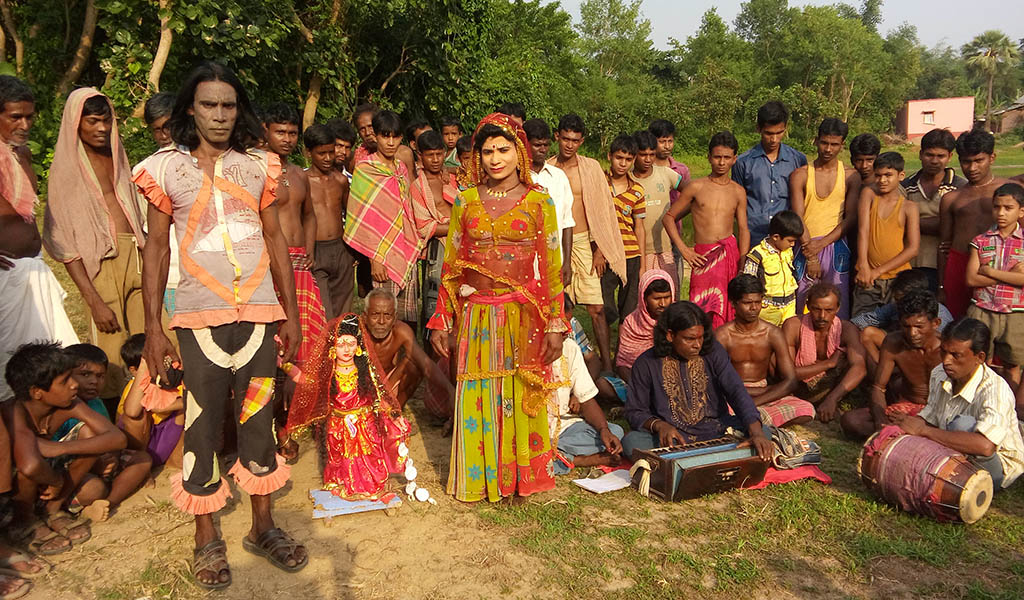
“Yet around the same time, a friend in my village died by suicide because they couldn’t bear the violence they faced for being kothi. I felt terrible anguish and betrayal, that all this organising about our rights never reached us—it is only limited to these metropolitan cities.”
The film Nisiddho Brotokotha meaningfully highlighted the plight of queer-trans people in rural Bengal where they are often treated with disdain and there are few esources they can access.
During their research, Mondol came across a myth that explained how Bhadu songs came to Birbhum.
According to the myth, Purulia’s Bhadu appeared in the dream of a kothi person in Birbhum and asked them to write Bhadu songs and sing them while traveling with a group in different parts of the district with one person dressed up as Bhadu.
This inspired the formation of many Bhadu groups in Birbhum, especially in the Mayureswar administrative blocks 1 and 2.
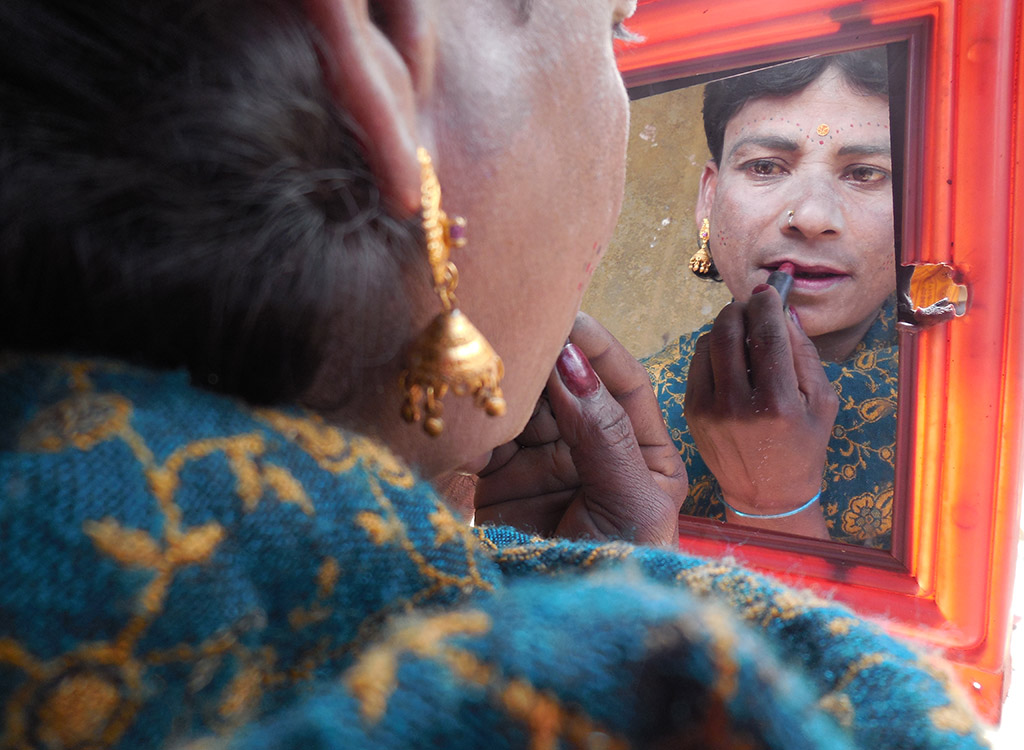
Most of the performers in Bhadu folklore are from the Bahujan and Dalit communities, which indicates the vulnerability of Dalit-queer individuals in rural Bengal who might not be able to get help for their security and survival.
The liberty of writing Bhadu songs created an amalgamation of the Bhadu myth and the contemporary realities of the people writing the songs. Many of these songs could be interpreted as both—the telling of Bhadu’s fate as well as queer melancholies and euphoria.
The mobility through the folklore created some sort of relatability or perhaps representation that is otherwise very rare for queer people in rural spaces.
However, the irony is that during the month of Bhadra, Bhadu’s are respected and celebrated, yet beyond the Bhadu festival their identities are dislocated and decontextualised by the people around them. Most of the time their survival depends on them being invited to perform in marriages, annaprashan (rice-feeding ceremony) or other festivities. Some of them also travel as professional launda dancers to Bihar and Uttar Pradesh to earn money.
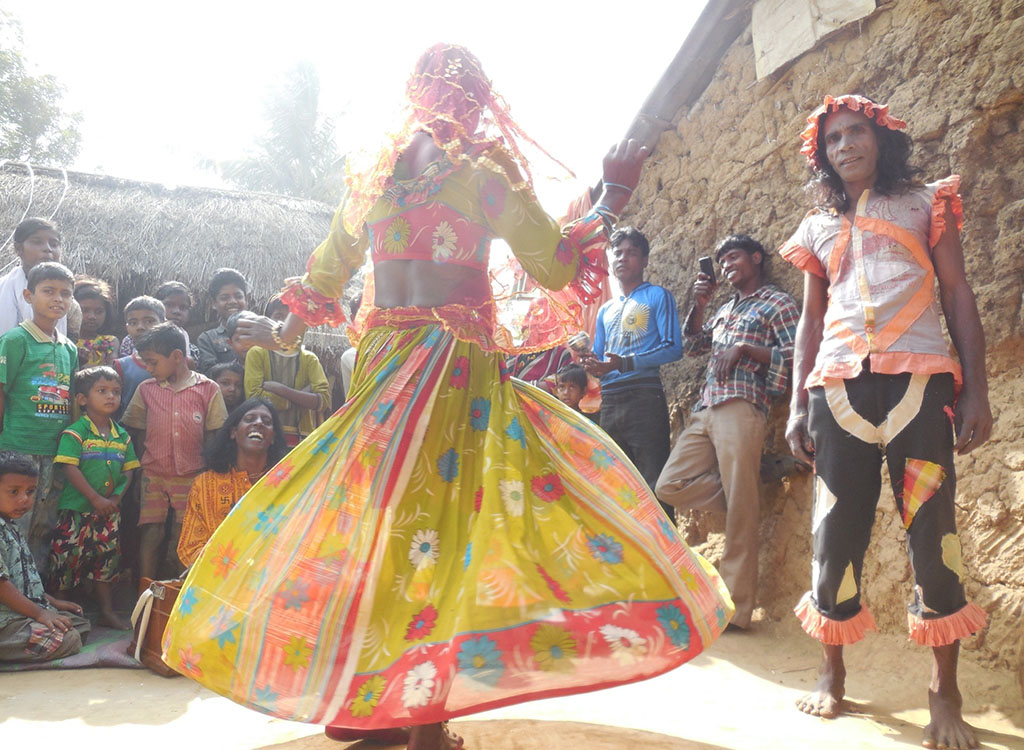
The adaptation of Bhadu folklore by queer people, their living and laughing, their grit and ability to find shelter through forging communities, teaches us how historically queer people consumed joy and euphoria from distorted realities.
The queerness in Bhadu is about the culture of drag that is homegrown and authentic. It shows how survival for many queer-trans people has historically meant collectivising to share solidarity, vulnerability, hurt and joy. The queerness in Bhadu is a living embodiment of queer-trans people’s artistry, endurance and resistance.
Queer worldmaking should be at the centre of our radical imaginations of equality. Otherwise, the future that is ‘queer’ will always be flawed, distorted and incomplete.
The lead image at the top of this page shows a Bhadu artiste getting ready for a performance (Photo by Debgopal Mondal)
Sudipta Das is a Dalit-queer feminist who enjoys using digital mediums as tools to advocate for meaningful representation and inclusion of marginalised people. Currently they work at The YP Foundation on the Queer Rights Programme. They are also an avid writer and trained sexuality educator.